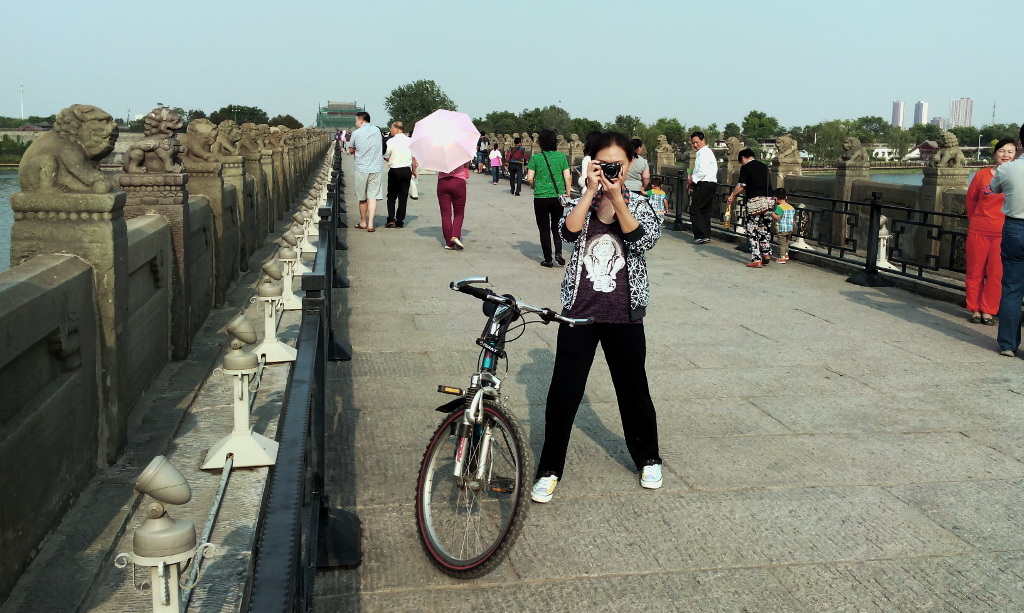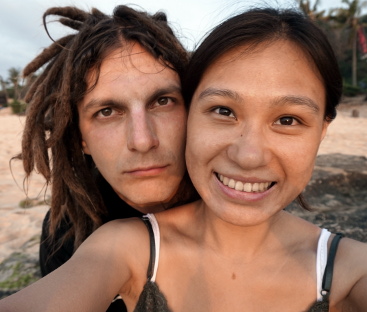卢沟桥 — Marco Polo Bridge
五一劳动节小长假(此处纯为吐槽:只有3天的假期怎么能叫做小长假?!何况其中两天还是周末……)的第二天,春光明媚,空气质量也不错,于是某人提议:骑车去宛平城参观一下闻名于欧洲的卢沟桥~ 在这里,我必须要感谢马可•波罗先生,这位著名的意大利旅行家,在700年前来到我大北京,途径此桥,叹为观止,并本着“独乐乐不如众乐乐”的无私分享精神,将卢沟桥介绍到欧洲,从而使之闻名于世。【友情提示:除非你是骑行发烧友或绿色出行倡导者,否则还是打车前往吧,因为距离真的不近!你也可以选择自驾,我会祝福你顺利找到停车位!】
We're going to start this blog with introducing relatively small but pretty famous site called 卢沟桥 (Lúgōu Qiáo), better known as Marco Polo Bridge in Western world. It's located at 丰台区 (Fēngtái district), relatively far from historic center of Beijing, so consider taking a cab to go there. Or do as we do: ride a bike, you'll have a chance to enjoy new green bikeways.
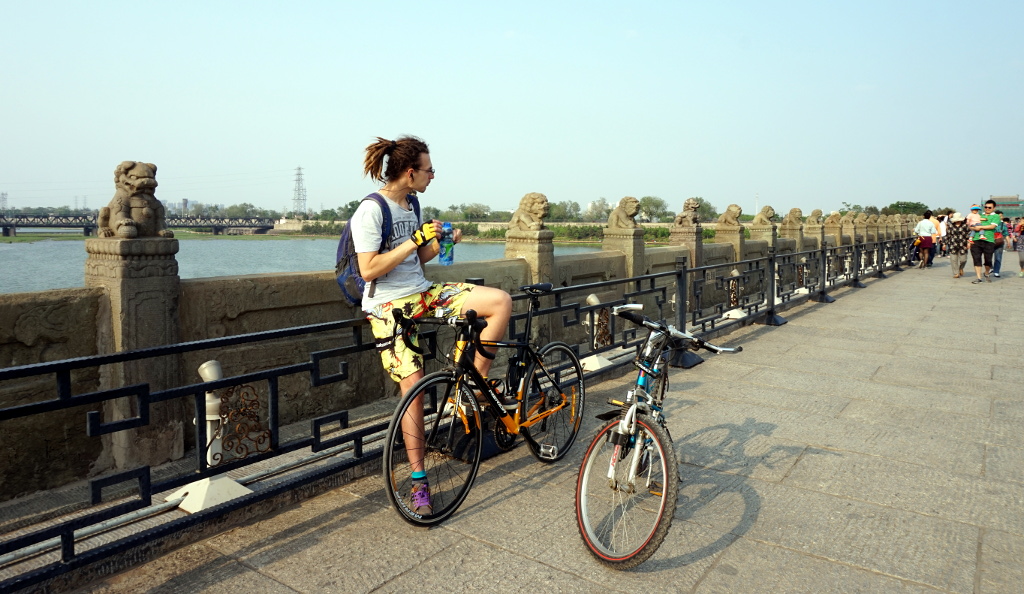
Chinese name means "Bridge over the Lugou river", but we know it as Marco Polo Bridge because famous Venetian wandering merchant allegedly commented on it in his well known travelogue. Was it about this exact bridge? No one knows.
卢沟桥,亦称芦沟桥,外国人称“马可波罗桥”,坐落于北京市丰台区永定河上,因横跨卢沟河(即永定河)而得名,是北京市现存最古老的石造联拱桥,也为华北最长的古代石桥。始建于金朝大定二十九年(1189年),建成于金章宗明昌三年(1192年),但于清朝康熙年间毁于洪水。康熙三十七年(1698年)重建,这才又有了卢沟桥,也就是我们今天有幸所看到的。因此,通常所说的卢沟桥有八百余年历史,是把新旧两个桥的时间算在一起,而我们现在所看到的这座康熙重建的卢沟桥,只有三百余年的历史。
Not many foreigners are actually coming here, probably because of its remoteness from main Beijing attractions. But if you'll get here when there's water in the river, you might love the sight. There are pictures of it when there's no water, looks a bit miserable and abandoned. Either way you might enjoy number of different lion figures all over the bridge.
在卢沟桥两畔,各有一座石碑:一座记载着清康熙三十七年重修卢沟桥的经过;另一座上是清乾隆皇帝亲题的“卢沟晓月”四字。“卢沟晓月”是“燕京八景”之一(其余七景分别为:太液秋风、琼岛春阴、金台夕照、蓟门烟树、西山晴雪、玉泉趵突、居庸叠翠)。看晓月要在黎明时分,站在古桥上,凭栏远眺,但见西山叠翠,月色妩媚。当然,你一定要选在没有雾霾的日子~
Fun fact. There were never real lions in China, but lion figures were here since like forever. So ancient Chinese probably heard about those from travellers. Imagine how hard it is to describe some species to the person who never ever saw anything like that. And now imagine what the other guy might picture. No wonder it was considered mythical, like a dragon or a phoenix. So yeah, Chinese lion figures are pretty weird looking.
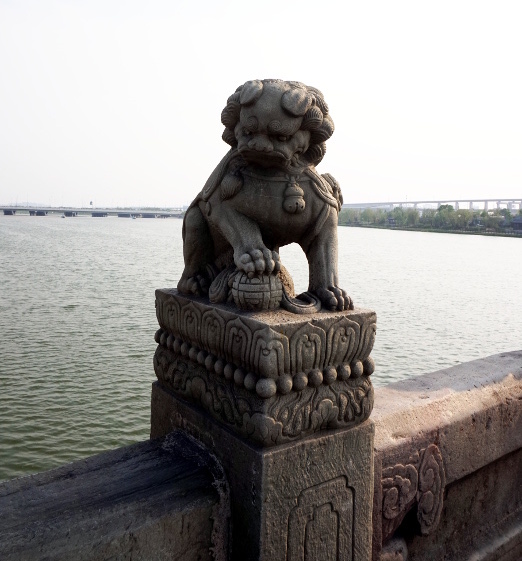
卢沟桥除了景色美之外,最让人感兴趣的,恐怕莫过于望柱上千姿百态的石狮了。这些石狮分别雕于金、元、明、清四个朝代,有雌雄之分,雌的戏小狮,雄的耍绣球。它们或卧或坐,或喜或怒,或侧身回首,或深情相拥,或交头接耳,或嬉戏耍闹。有的大狮子身上雕刻了许多小狮子,最小的甚至只有几厘米长,有的只露半颗头、一张嘴。中国民间有句歇后语:“卢沟桥的石狮子——数不清”,若你有兴致,不妨去数数看~
There are some inscriptions on the stones here and there in Chinese, Japanese, Korean, English and Russian (traditionally with a lot of mistakes) telling the history of the bridge. But the main message is the surface of the bridge itself. The idea probably was to leave (or make) central and side parts of the bridge look like a scar from so called 7/7 incident when Japanese troops bombed it starting Second Sino-Japanese War. Makes it a bit dangerous to walk, actually, so watch your step.
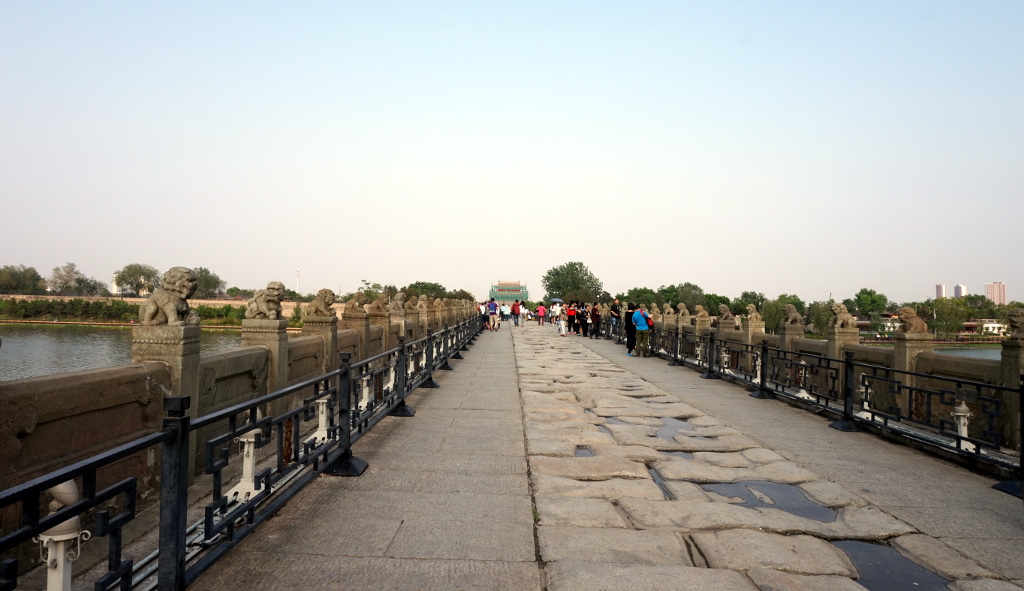
卢沟桥的东头是宛平县城,这是一座建于明末拱卫京都的拱极城,至今仍保留有当时的面貌,给人一种穿越的感觉。同时也很难让人想象历史上著名的“卢沟桥事变”便发生在这里,城墙上至今还留着累累弹痕。城内北侧建有“中国人民抗日战争纪念馆”,东侧为“抗日战争烈士陵园”,城楼上有“七七事变纪念馆”和“中国古桥陈列馆”。
If you're interested in the history of the war, walk 200 meters up by 城内街 (Chéngnèi Jiē) old street (which is under reconstruction by now, but it's possible to pass by) to 宛平城 (Wǎnpíng Chéng) fortress which is currently the Museum of the War of Chinese People's Resistance Against Japanese Aggression.
